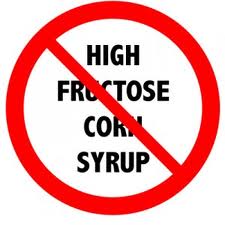Having praised during the eighties the merit of this 'natural sugar', the scientific community is now unanimous; consuming fructose constitutes the worst dietary advice that one could give to diabetics, who without further ado, should throw their fructose jars in the nearest available bin.
For example, it is known today that an over consumption of fructose promotes hypertension, renal dysfunction, raised uric acid levels, visceral and/or abdominal fat accumulation (including fatty liver), diabetes (well I never!) and the fearsome metabolic syndrome.
The latter represents an undisputed modern day plague, combining physical signs (obesity or simply abdominal fat (midriff tyre)), raised blood pressure, and biological abnormalities (raised insulin and triglycerides, lowered 'good' HDL cholesterol, raised hepatic enzymes SGPT) – an explosive cocktail that acts as direct precursors to degenerative diseases: diabetes, cardiovascular events, Alzheimer etc...
 But how much is "too much fructose" and are all forms of fructose equal in this apocalyptic scenario? The answer is no; the fructose from fruits and vegetables is not as dangerous as that which is used as sweetener, a crystallised form, derived from the corn waste process (HFCS or High Fructose Corn Syrup). Its price is attractive and its sweetening power superior to classic sugar (sucrose), making it an ideal choice for the food industry, even more so because it doesn't make one feel satiated in the same way as classic sugar and fat would.
But how much is "too much fructose" and are all forms of fructose equal in this apocalyptic scenario? The answer is no; the fructose from fruits and vegetables is not as dangerous as that which is used as sweetener, a crystallised form, derived from the corn waste process (HFCS or High Fructose Corn Syrup). Its price is attractive and its sweetening power superior to classic sugar (sucrose), making it an ideal choice for the food industry, even more so because it doesn't make one feel satiated in the same way as classic sugar and fat would. As a guide, one can fix the maximum limit for fructose intake at 30 grams per day, but this figure should be reduced for those who present with a slightly or abnormally raised level of uric acid. In the case of hyperuricemia, fructose intake should be reduced below 15 grams a day!
To help you, you can find a "fructose list" on my website: www.gmouton.com (PDF file to download free of charge). This list gives you the fructose contents of fruits, vegetables, dried fruits and various drinks. You can also access all the scientific references on the topic via the fructose conference (conferences/Nutrition & Function) in English.
Final warning: do not believe the slogan "without added sugar" on food packaging. All this means is no added sucrose - but it can still be full of fructose. Rather, the actual amount of sugars can be found on the 'Nutritional Information' box printed on the product, under the heading "Carbohydrates of which sugars". The trick comes from playing on the s of sugars: Fructose is not a sugar but one of the sugars!




